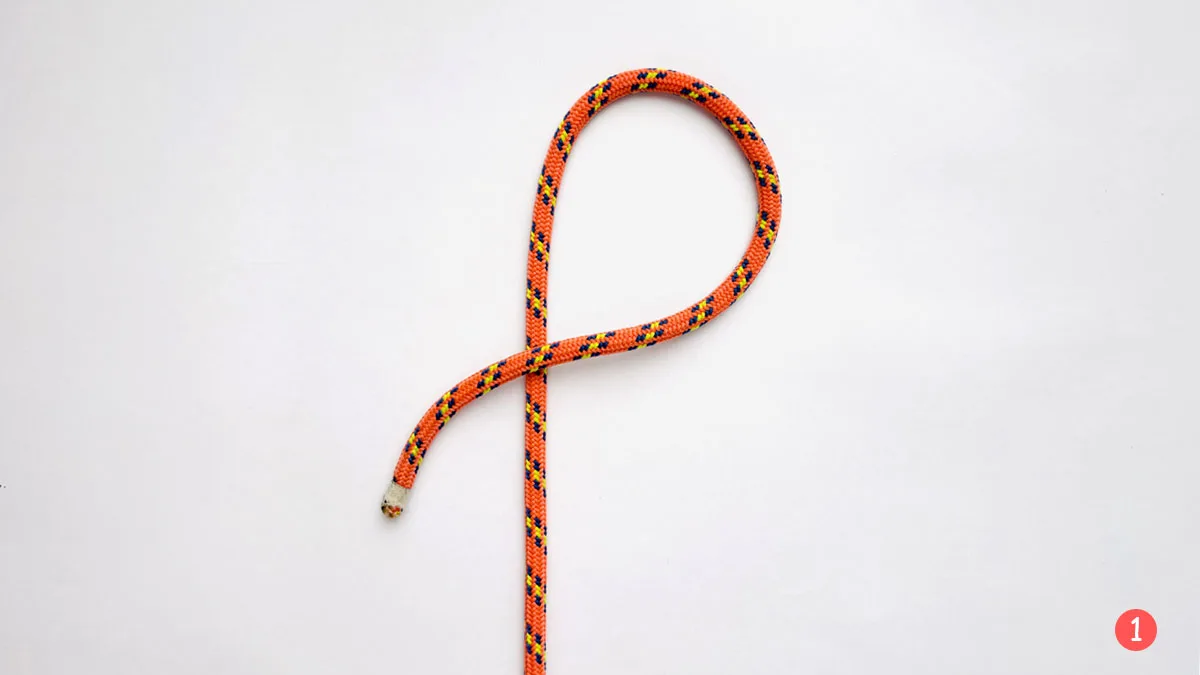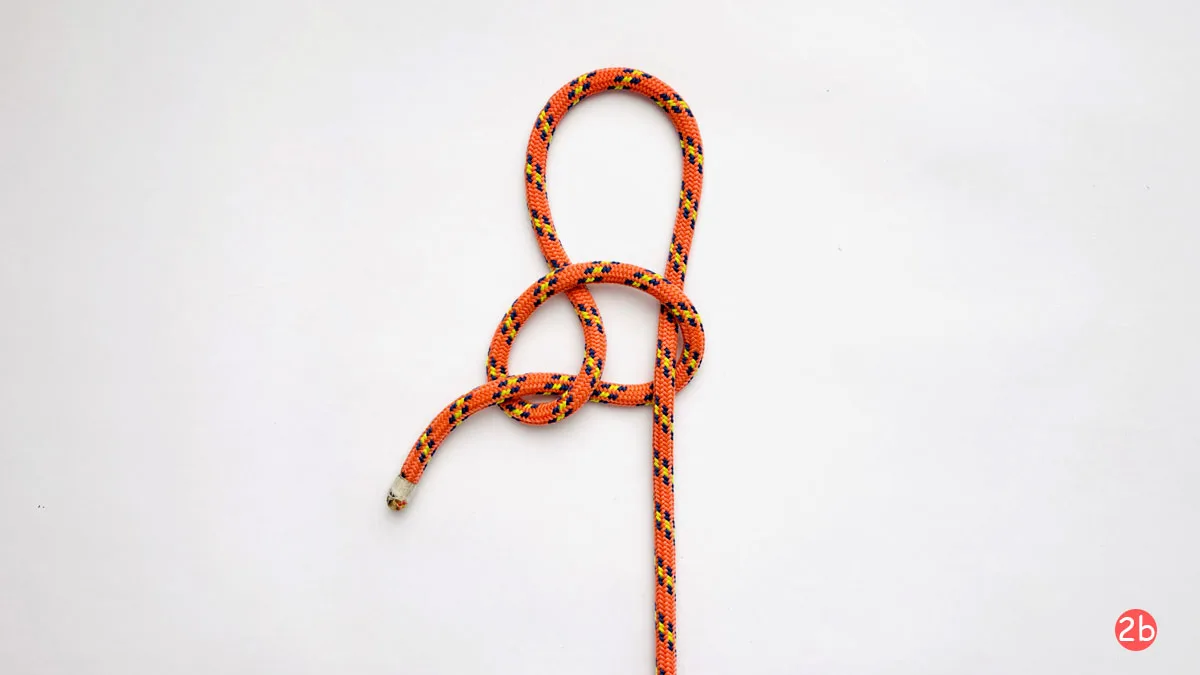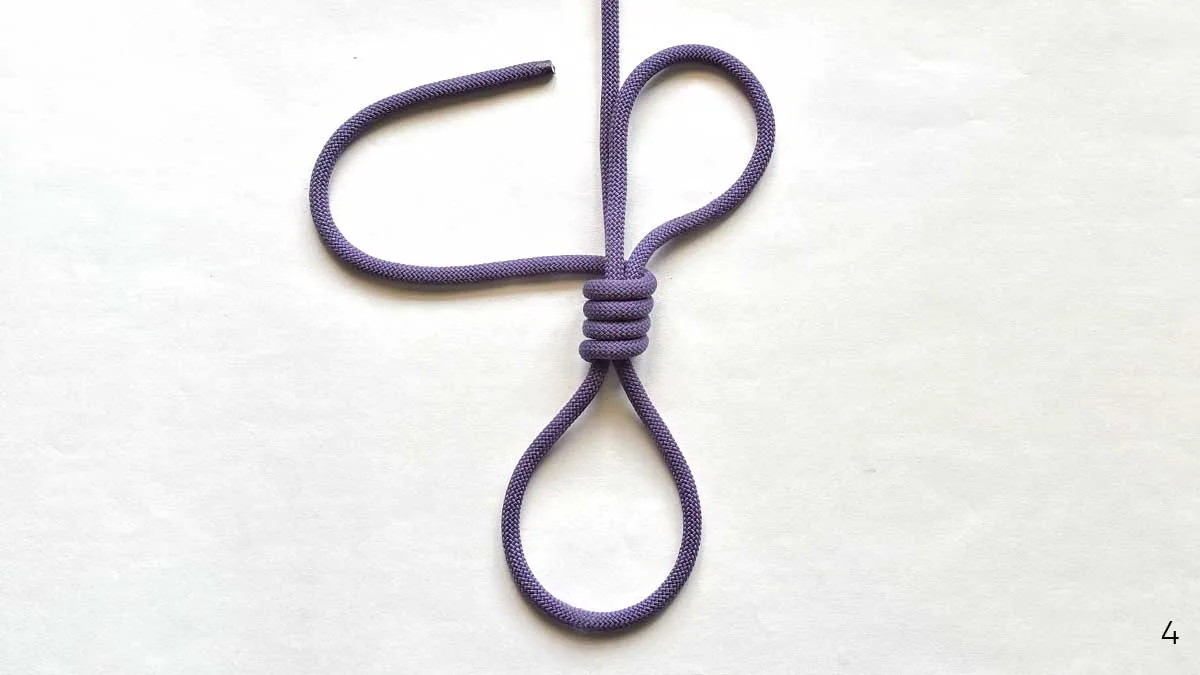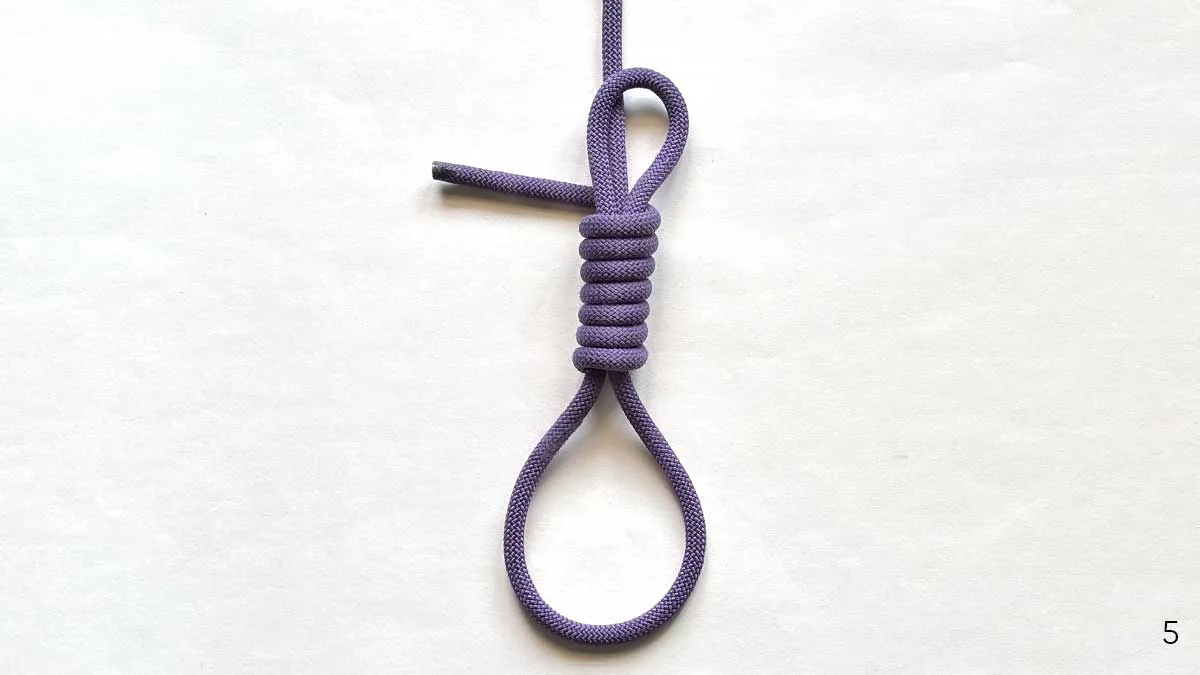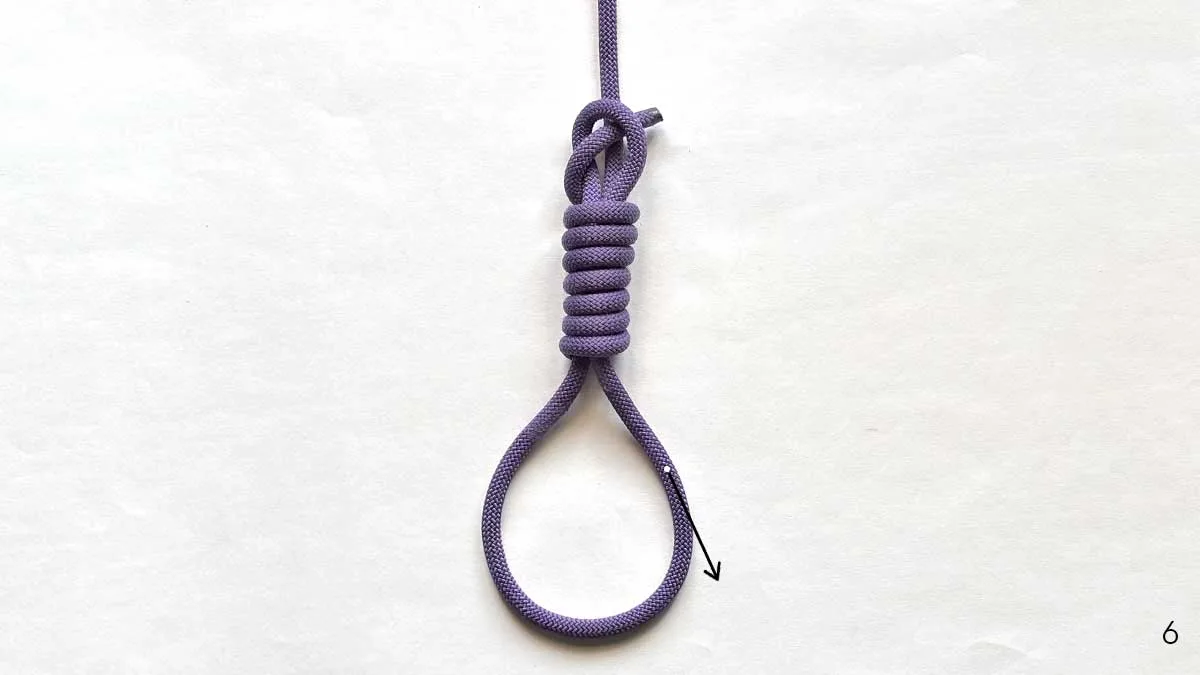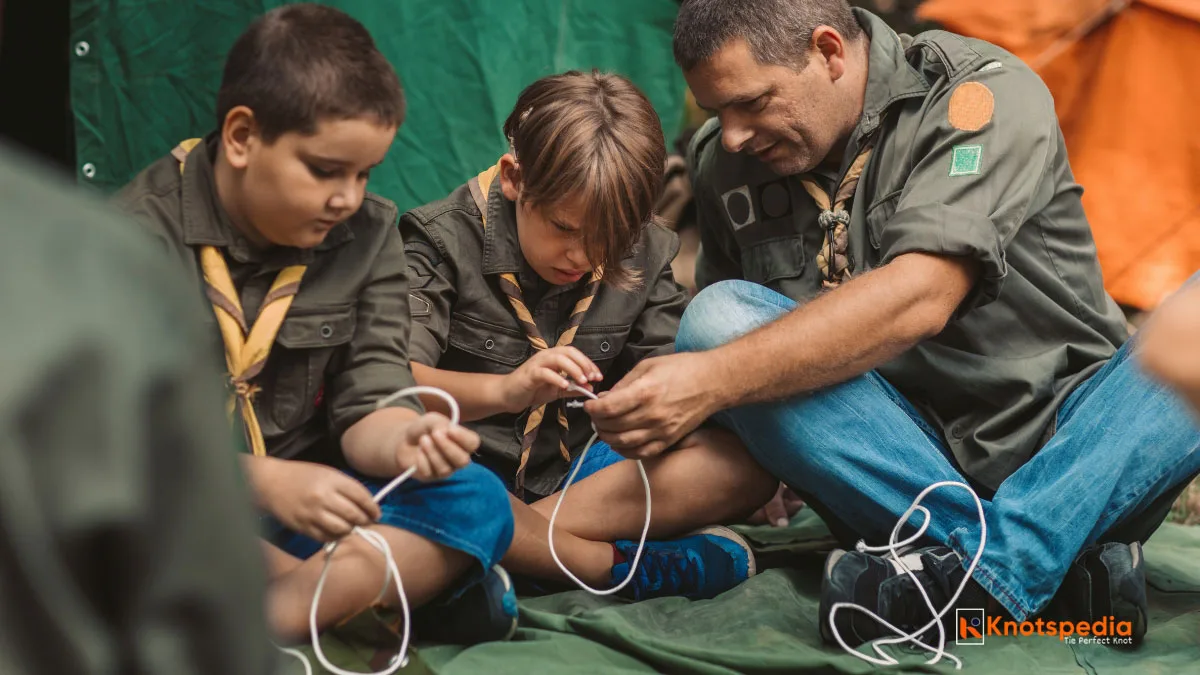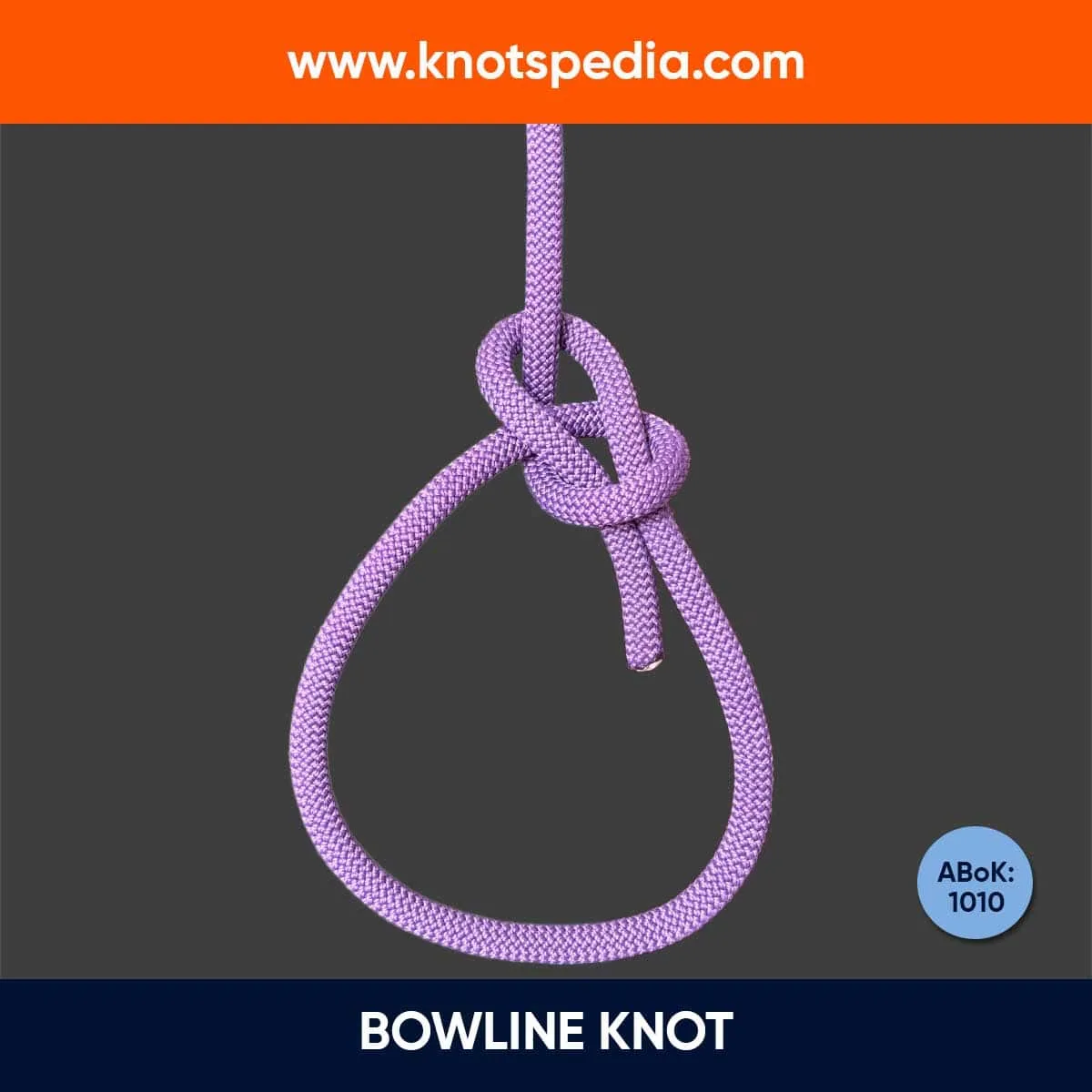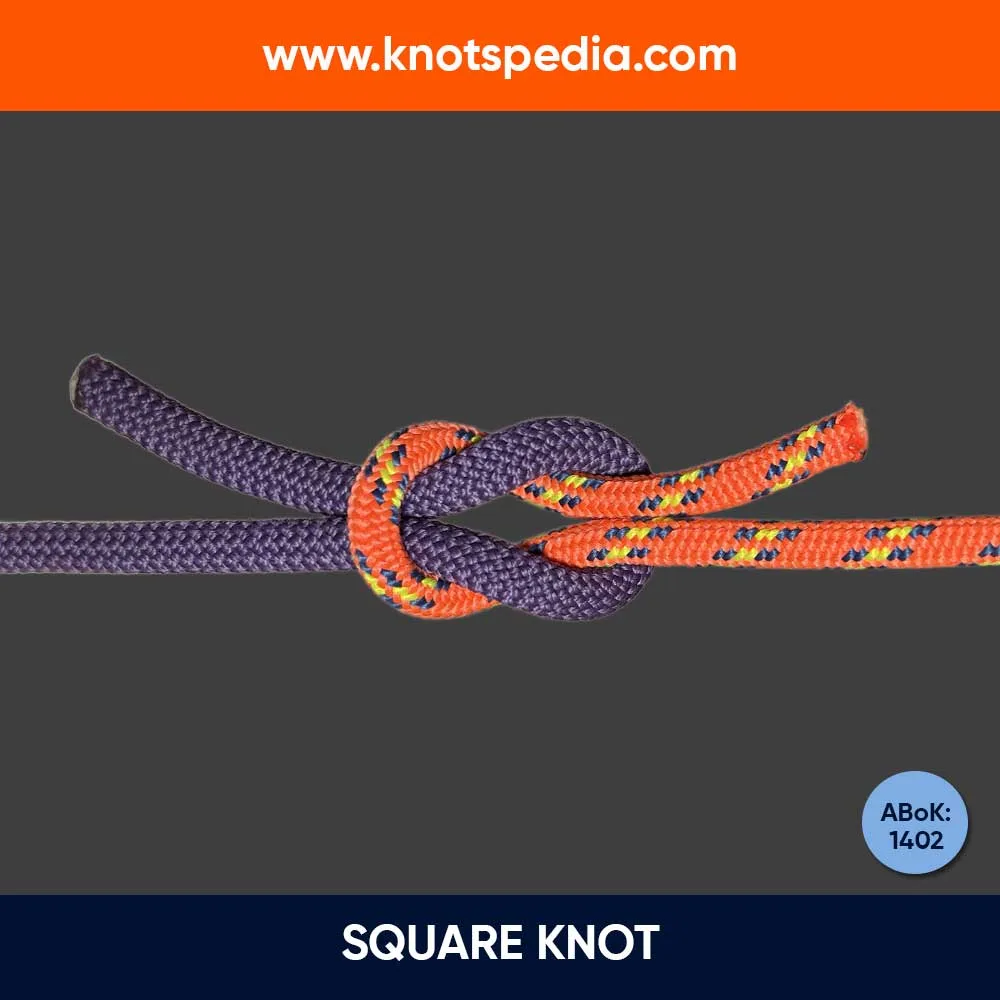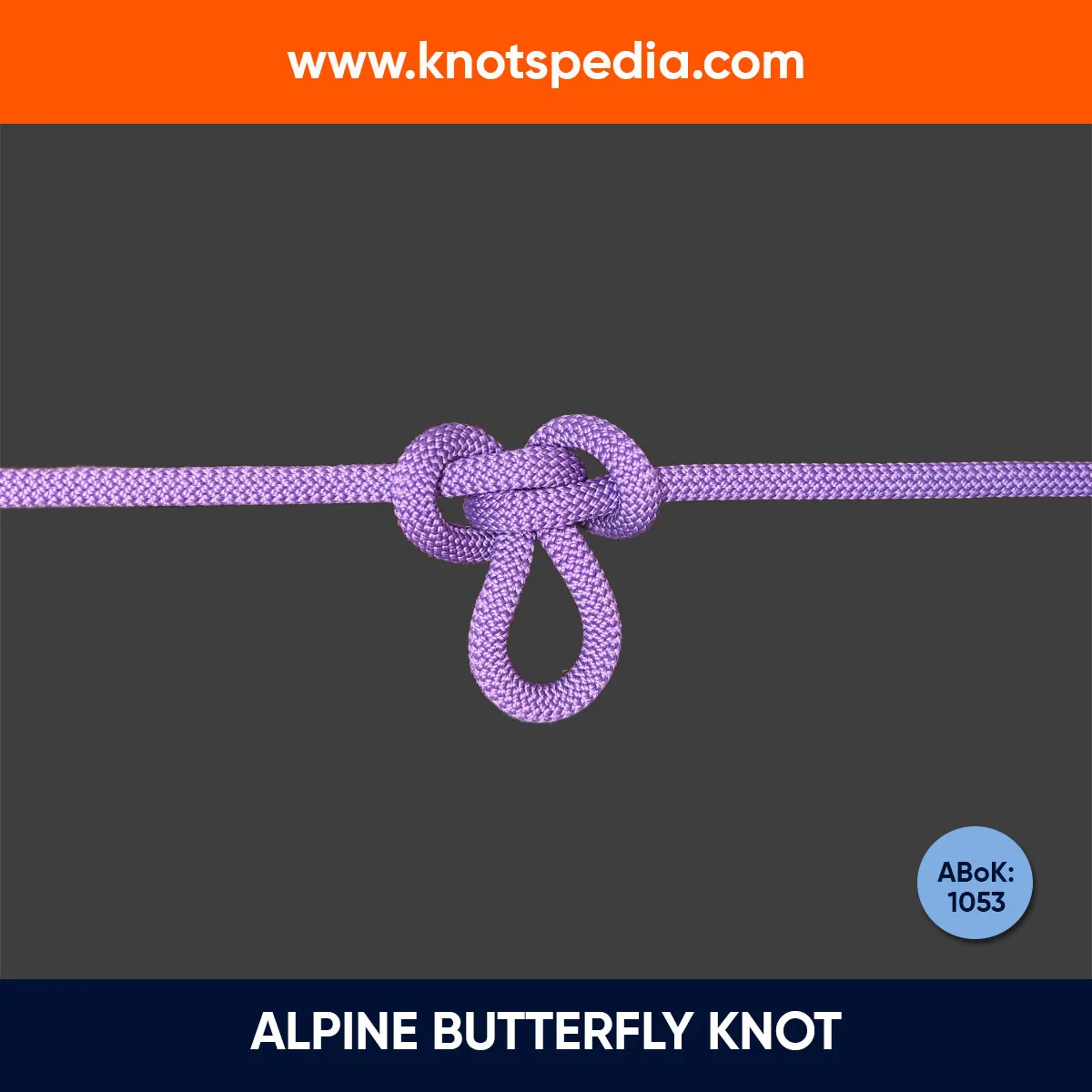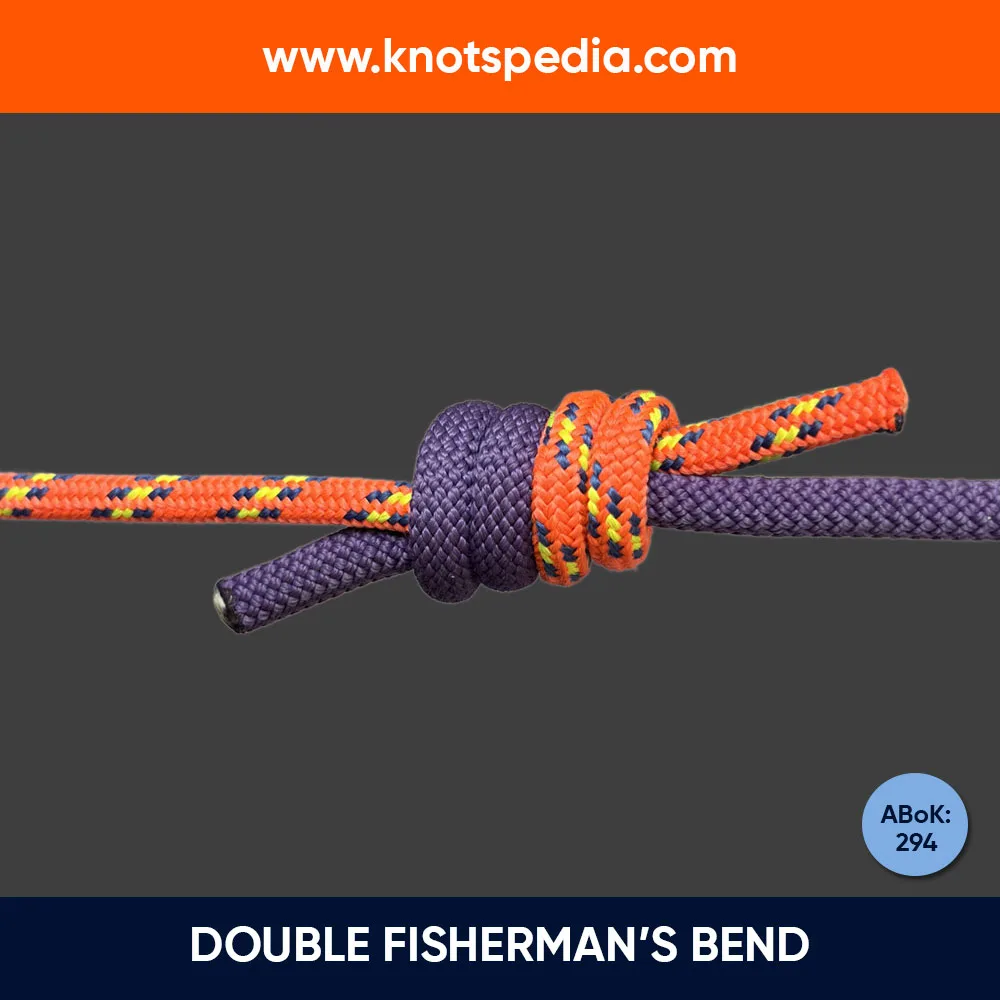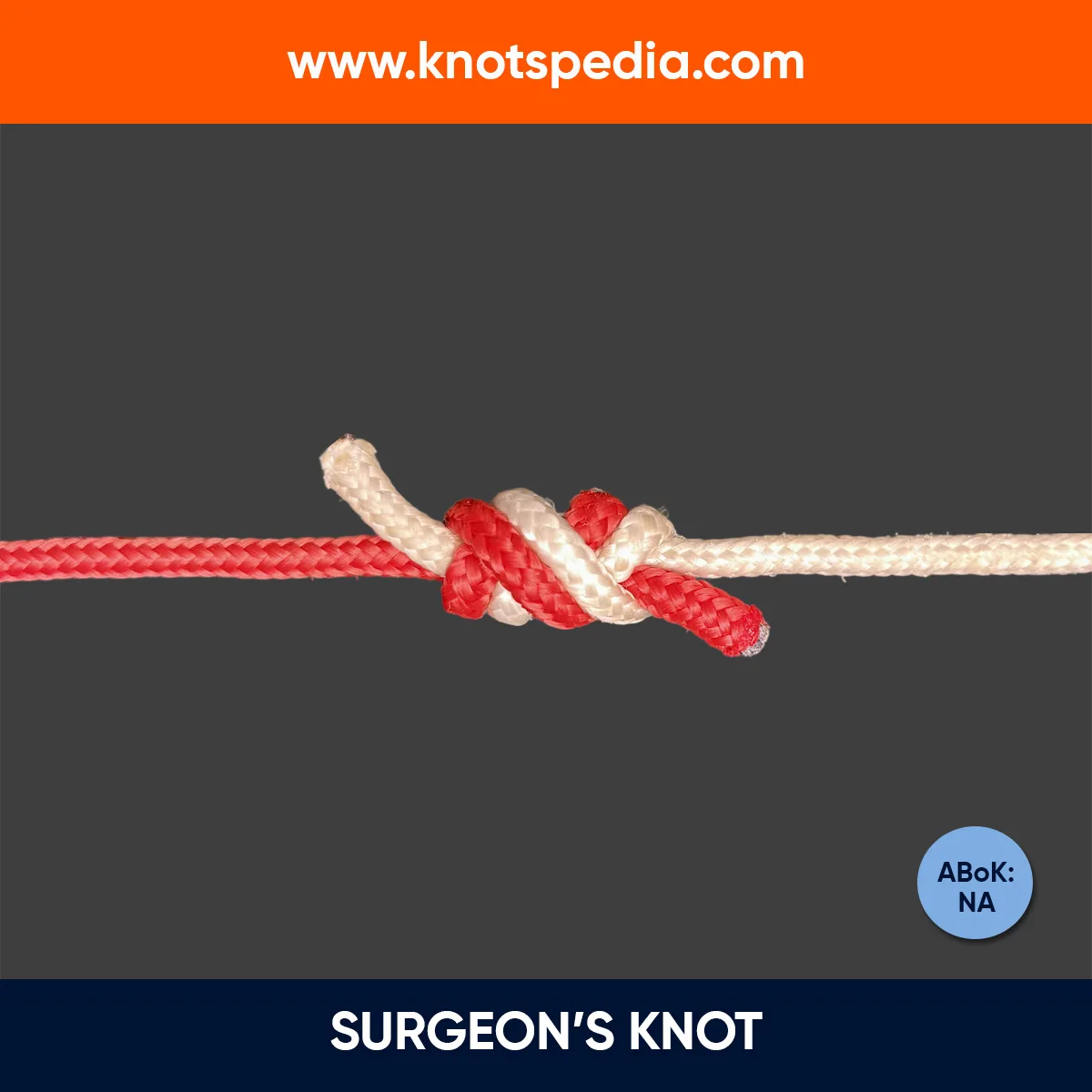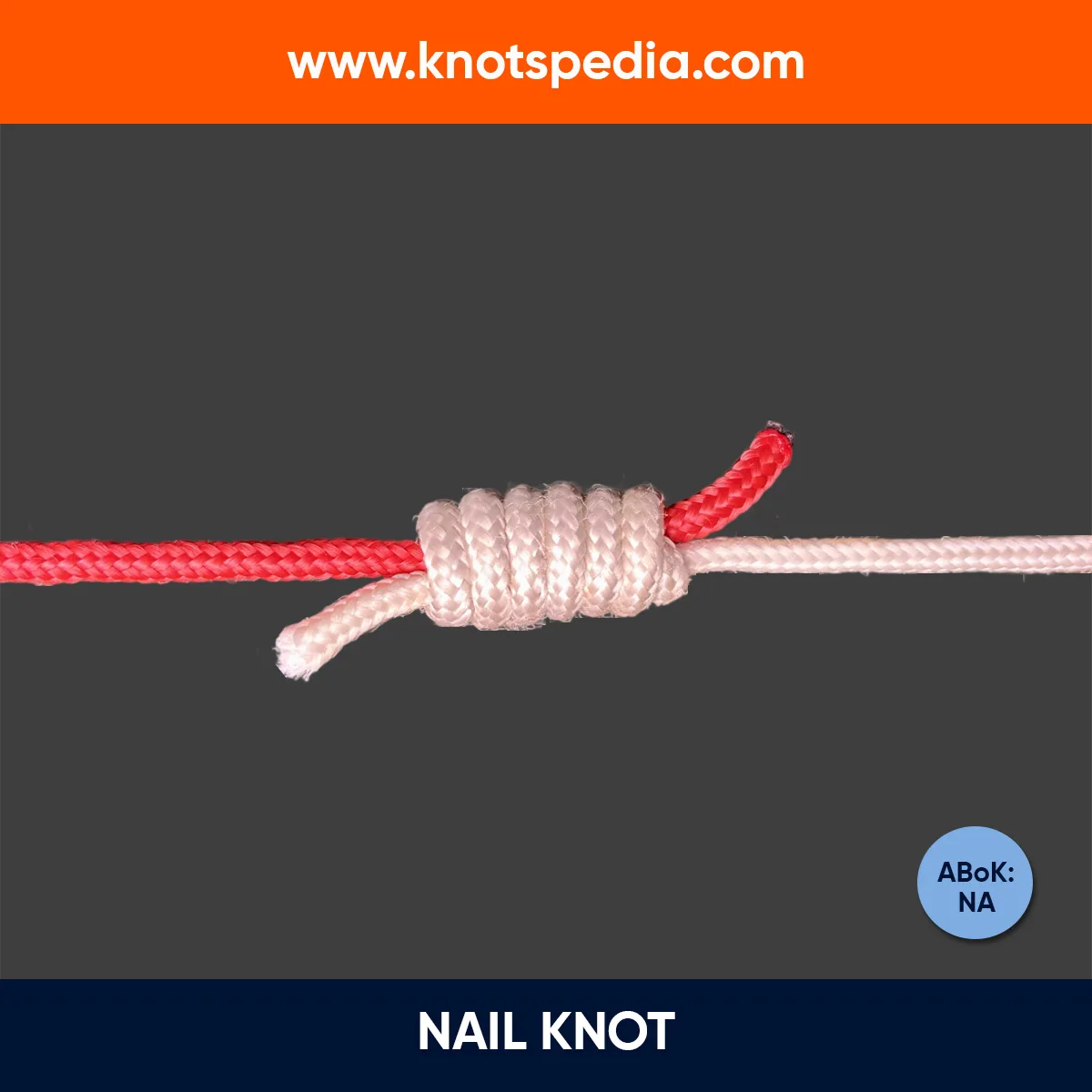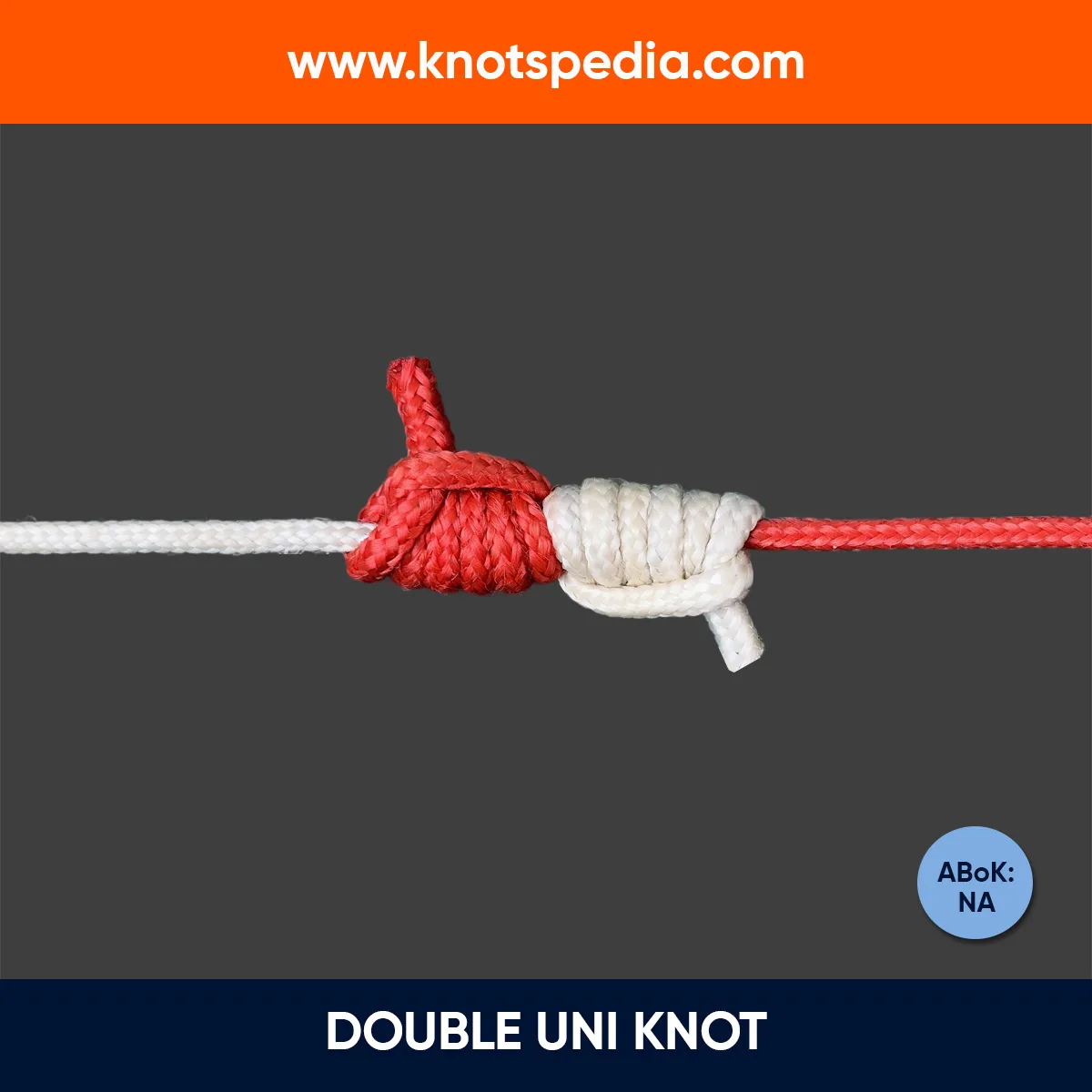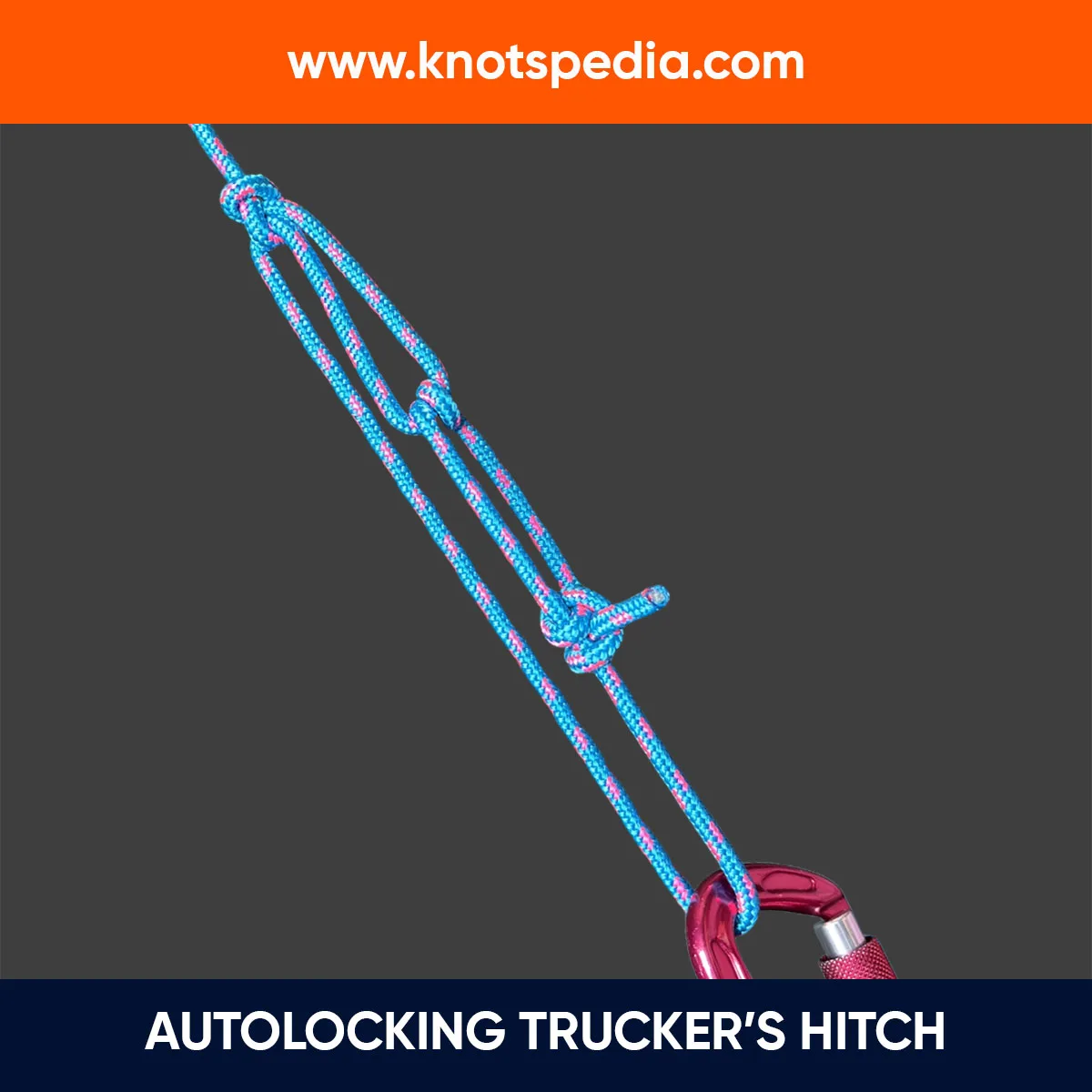The Noose knot is one of the simplest running loops that self-tightens when the standing end is pulled.
It is similar to the Slip knot except that the bight is formed on the longer end (the standing end) and not the shorter end (the working end).
It’s compared with the Hangman’s knot, but both serve different purposes (more on this later).
First, let’s check how to tie a Noose in detail.
Noose Knot Details
Type: Loop
Other Names: Sliding loop, Running knot, Simple Noose
ABoK Reference: #8, #43, #1114
How to Tie a Noose Knot
- Form an overhand loop with the working end passing it over the standing part.
- Create a bight on the standing part and feed it through the loop.
- Tighten the knot.
To untie this knot, just hold the knot and pull down the standing part. It will spill the knot apart.
Keep the working end at least a few inches long to keep it from untying.
Noose Knot Step by Step

How to Tie a Hangman’s Noose Knot
The Hangman’s Knot is a Noose Knot that has many turns (6-8 loops, maximum 13) created around the loop.
It has a dark history associated with capital punishment, but these days, it’s more useful for practical tasks.
It’s used to tie down a boat, vehicles, or camping tents, and is used for decorative purposes like making a lanyard.
- Make a “S” shape with your rope.
- Pass the tag end behind.
- Wrap it around the upper loop and the standing part.
- Wrap it 3 more times.
- Wrap it 3 more times again.
- Pass it through the top loop.
- Pull the bight to tighten the top loop
Need a bigger or smaller loop? Just pull the standing end to adjust.
Note: People mistakenly use the term Hangman’s knot for the Noose knot. But here’s the thing: All Hangman’s knots are Nooses but not all Noose knots are hangman’s knots.
Hangman’s Noose Knot Step by Step
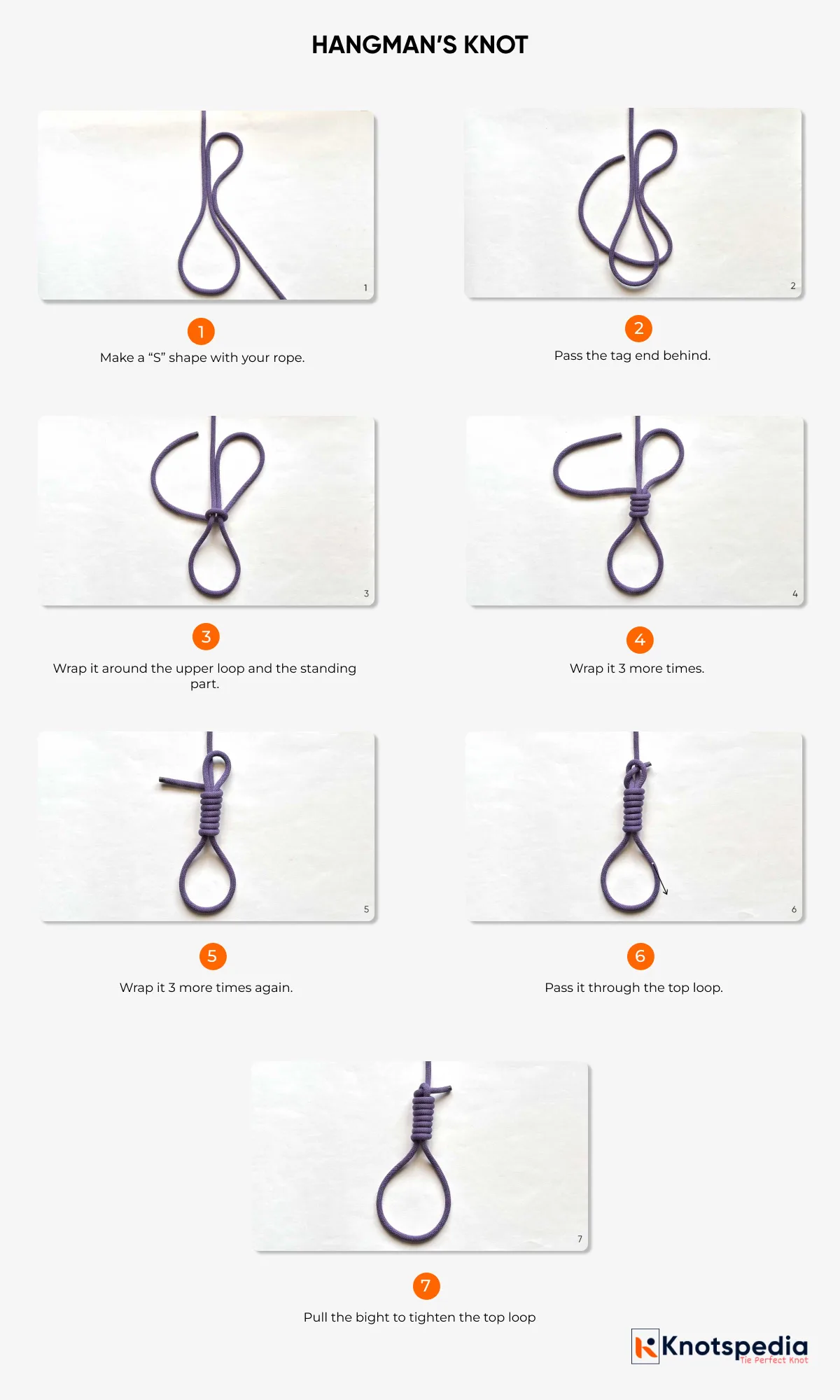
WARNING: Don’t use the Noose knot to play hangman. It can cause injury or even death if used around someone’s neck. So, NEVER play this knot around somebody’s body.
Noose Knot vs Slip Knot
Let’s clear this up. The Noose knot and the Slip knot are two different knots.
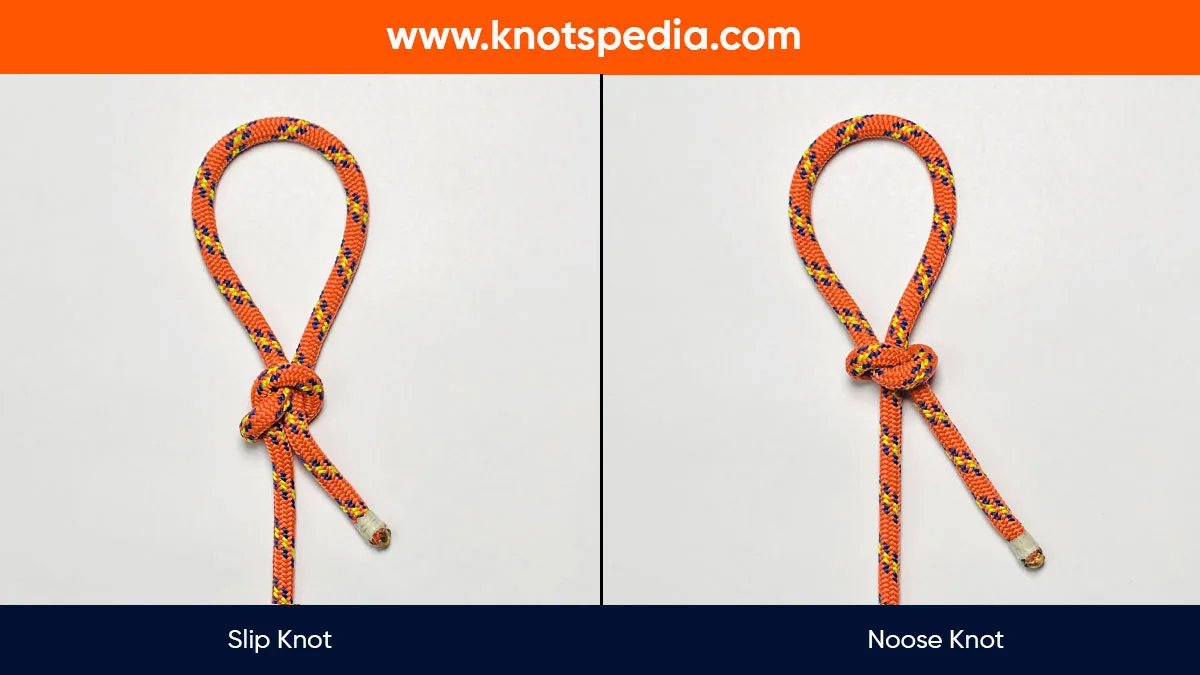
Here’s a detailed comparison:
| Feature | Slip Knot | Noose Knot |
| Type | Quick release stopper Knot | Self tightening loop knot |
| Primary Function | Used as an easy-to-release and temporary hold | Create a secure and adjustable loop |
| Tightening Method | Tightens when the working end is pulled | Tightens when the standing end is pulled |
| Untying Method | Pulling the working end spills the knot | Pulling the standing end spills the knot |
| Structure | The working end is passed through the loop | The standing end is passed through the loop |
| Security | Used for a temporary hold | Provides a moderately secure hold |
| Complexity | Quick and simple | Quick and simple |
Applications and Uses
In the old times, this knot was used to snare birds and small animals.
Its variation is used for all sorts of jobs today–from fishing to camping alike.
It’s also used for tying parcels because of its quick release ability.
It’s used as the first loop when casting on, but it is tied as a Noose knot and commonly called a Slip knot.
Other Noose Knots
Slip Noose
The Slip Noose (ABoK #1804) is the slipped version of the Simple Noose.
It is tied similarly to the Noose Knot, except the bight is fed into the loop instead of the tag end.
Figure 8 Noose
The Figure 8 Noose (ABoK #1116) is based on the classic Figure 8 Knot.
It forms a more reliable Noose Knot and draws up more smoothly than the original Noose.
Knot Based on the Noose Knot
Arbor Knot
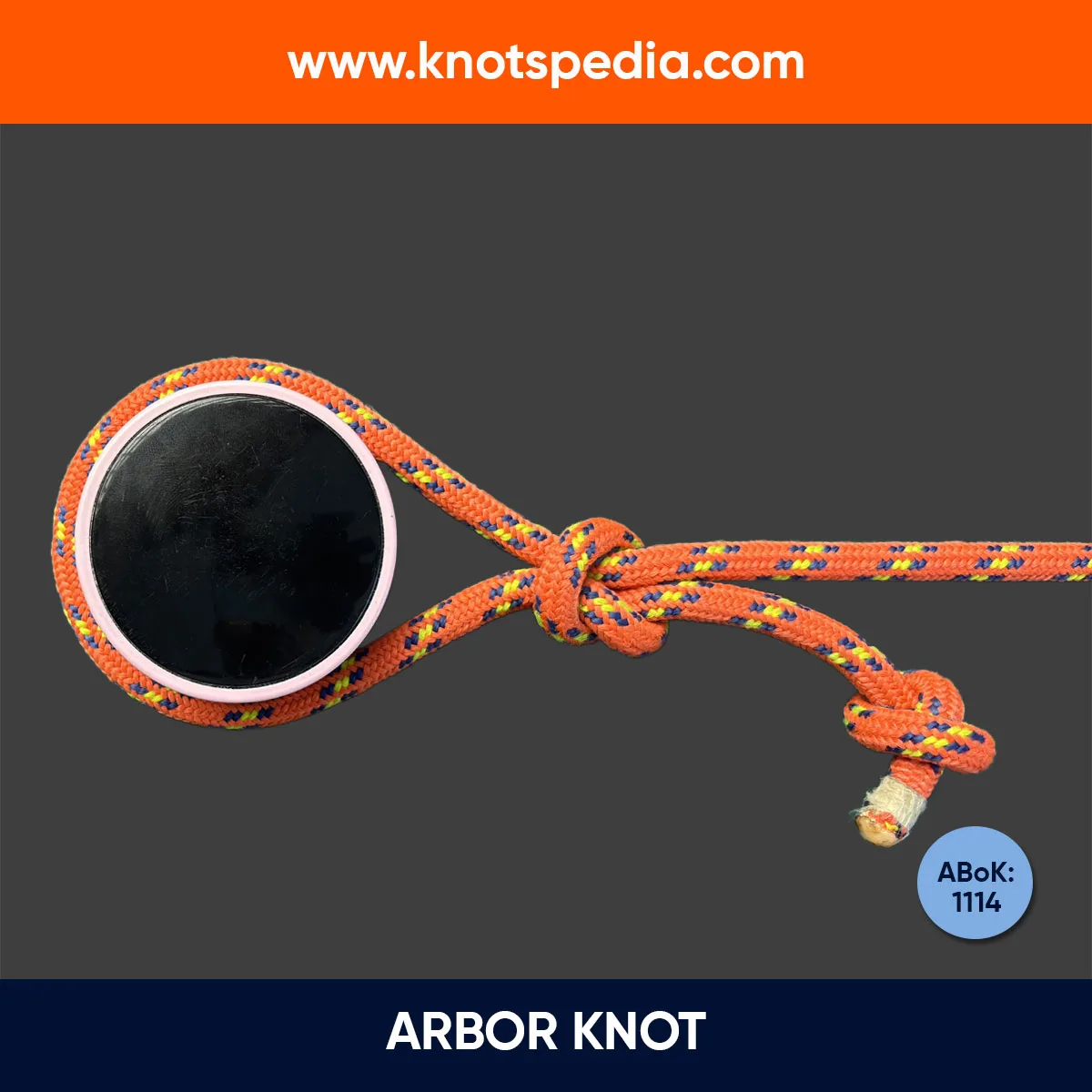
The Arbor Knot is a basic Noose with an extra Overhand Knot at the end of the working end.
It’s used to tie fishing lines to an arbor.
Butcher’s Knot

The Butcher’s Knot (ABoK #183) is a Noose you tie around an object and finish off with a Half Hitch Knot.
It’s a classic go to for butchers to tie up meat for roasting.
Poacher’s Knot
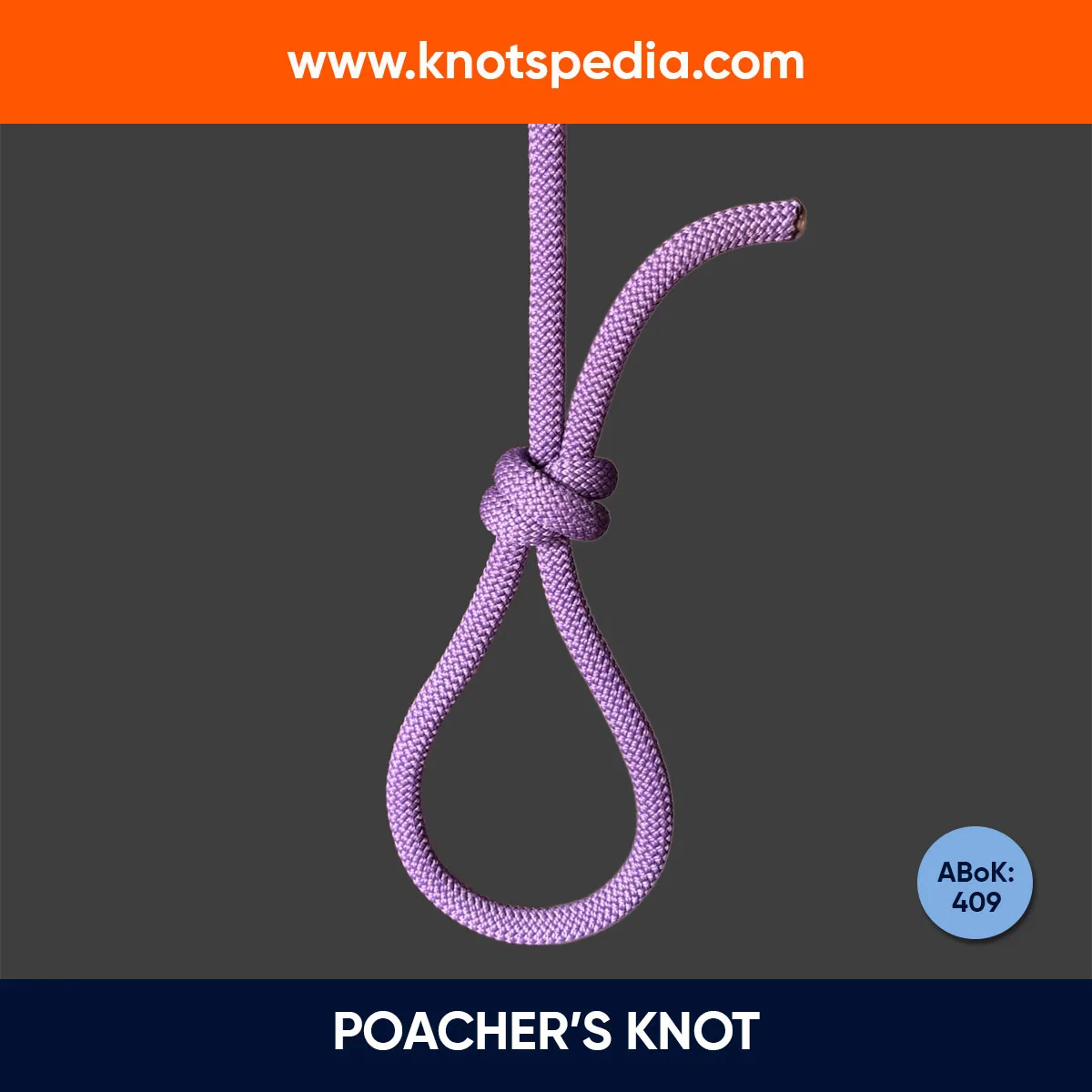
The Poacher’s Knot (ABoK #409) is formed by tying a Double Overhand Knot around the standing end.
This gives an adjustable and secure self-tightening Noose.
Uni Knot

The Uni Knot looks like a Hangman’s Noose in appearance, but it’s a different knot altogether.
It forms a loop that you can adjust and is used in fishing for joining two lines.
Liked the article? Share it or Bookmark for future reference!
